Sucre jest miastem na tyle waznym w historii Ameryki Poludniowej, ze warto szerzej zapoznac sie z jego historia, architektura i innymi atrakcjami. A wiec zacznijmy od poczatku.
Dzisiejsze Sucre zostalo zalozone w roku 1538 pod nazwa ‘Ciudad de la Plata de la Nueva Toledo’ czyli Srebrne Miasto Nowe Toledo. Wkrotce La Plata zostala stolica ‘Audiencia de Charkas’, ktora sprawowala piecze nad rozleglym terenem Ameryki Poludniowej (dzisiejszy Paragwaj, Peru, Chile, Argentyna i Boliwia) – pod patronatem kolonialnego Wicekrolestwa Peru. Pozniej przeksztalcila sie w Wicekrolestwo ‘Rio de La Plata‘.
W 1609 w miescie powstalo arcybiskupstwo a w 1624 – Uniwersytet Sw. Franciszka Ksawerego (drugi najstarszy w Ameryce Poludniowej). Do dzis Sucre jest duchowa stolica Boliwii, z ponad 100 kosciolow i licznymi konwentami oraz mekka studentow, takze zagranicznych.
Kultura andaluzyjska, ktora przyniesli konkwiskadorzy, ma swoje odbicie w niezwykle bogatej architekturze prywatnej jak i koscielnej. Domy jak i urzedy zostaly zbudowane wokol przestronnych dziedzincow (patio), oplecionych przepieknymi arkadami, zas ich elewacje wyrozniaja sie licznymi balkonami (drewniane pochadza z ery kolonialnej, metalowe z republikanskiej). Architektura koscielna zas jest meskla renesansu (z elementami gotyku), baroku i neoklasycyzmu. W niektorych budowlach da sie rowniez zaobserwowac tzw. metysaz, czyli wplywy rdzennej kultury indianskiej (wiecej na ten temat tutaj: http://amerykalacinska.com/www/index.php/73-74/10-latynoamerykaska-architektura-kolonialna–zarys-rozwoju-i-charakterystyka.html).
Dzieki przyjemnemu kilmatowi, Sucre stalo sie rezydencja wlascicieli kopalni srebra w Potosi, ktore oddalone jest o 2 godziny (jazdy autobusem) – stad niezwykly rozwoj tego miasta. (O Potosi pisalam wczesniej: http://amerykalacinska.com/www/index.php/73-74/10-latynoamerykaska-architektura-kolonialna–zarys-rozwoju-i-charakterystyka.html).
Odzwierciedleniem nowobogackiego stylu zycia jest zamek Glorietta – najdziwniejszy przyklad historyzmu jaki przyszlo mi ogladac, w zyciu!
W 1809 roku Sucre zapoczatkowalo ruch wyzwolenczy Boliwii (jak i calej Ameryki Poludniowej), by w roku 1826 stac sie ‘prowizoryczna’ stolica utworzonego ‘Alto Peru’, a 13 lat pozniej – konstytucyjna stolica Boliwii. Z upadkiem potegi ekonomicznej w Potosi pod koniec XIX w. rzad Boliwii przeniosl sie do La Paz. Do dzis Boliwia posiada dwie stolice.
W roku 1991 Sucre zostalo objete patronatem UNESCO.
4 nazwy:
- Charcas – pierwotna, przedkolonialna nazwa miasta
- La Plata – w czasach swietnosci kopalni srebra w pobliskim Potosi
- Chuquisaca – imie nadane miastu w czasach walki o niepodleglosc
- Sucre – nazwa nadana miastu na szesc jednego z przywodcow rewolucji – Antonio Jose de Sucre
A ja dodam jeszcze jedna, ktora takze jest powszechnie uzywana: ‘La Ciudad Blanca’, poniewaz wiekszosc budowli pomalowana jest na kolor bialy. Nie polecam wiec zwiedzania miasta bez okularow przeciwslonecznych i kremu z filtrem – grozi to slepota i poparzeniem. Polecam rowniez zaopatrzenie sie w sombrero (jego brak spowodowal, ze chodzilam po miescie oslaniajac twarz dlonia lub mapa, albo szukajac cienia, co nie bylo to zbyt wygodne).
Tak na marginesie, odwiedzilam kiedys Ostuni – ‘La Citta Bianca’ we Wloszech. Niby ta sama nazwa, lecz zupelnie inne klimaty. Wloskie miasteczko wznosi sie na wzgorzu – boliwijskie polozone jest w dolinie. Ostuni jest spokojnym miasteczkiem ‘prawie’ wolnym od samochodow z powodu bardzo waskich uliczek (choc przekonalam sie na wlasne oczy, ze niemozliwe stalo sie mozliwym) – Sucre jest miastem tetniacym zyciem, a po jego uliczkach jezdza tysiace glosnych pojazdow. Ostuni posiada kilka kosciolow – Sucre ponad 100! Przyjrzyjmy sie im z bliska:)
Swoj tour zaczelam od Plaza 25 de Mayo – glownego placu Sucre, ktory jest parkiem! Przyjemnie, prawda? Podobna Plaze maja Cochabamba i Santa Cruz .
Swoje pierwsze kroki skierowalam do Katedry Guadalupe – kojarzy Wam sie z czyms ta nazwa? Oczywiscie – z telenowelami meksykanskimi, w ktorych glowne bohaterki wznosily swe modly do Matki Boskiej z Guadalupe i wlasnie w katedrze w Sucre znajduje sie jeden z Jej wizerunkow! Poniewaz miasto obchodzilo swieto maryjne, katedra byla otwarta dla zwiedzajacych, a swiety obraz w przebogatej sukience wystawiony na pokaz.
Normalnie by go zobaczyc, trzeba zakupic bilet w muzeum katedralnym za 40 bs. bez mozliwosci robienia zdjec. W tym najwazniejszym muzeum w Boliwii mozna zobaczyc obiekty sztuki sakralnej i swieckiej. Przewodnik wspomina pinakoteke z malarstwem m.in. Van Dycka i Zurbarana, ale mnie poinformowano, ze znajduje sie ona w innej czesci miasta, gdzie trzeba zakupic dodatkowy bilet (?). Coz, bylo to jedne z niewielu miejsc, ktorych nie odwiedzilam.
Budowa katedry rozpoczela sie w roku 1559, ale widoczne sa w jej architekturze wplywy zarowno renesansowe, barokowe jak i neoklasyczne. W jej obrebie znajduje sie Kaplica Virgen de Guadalupe ze swietym obrazem.
Po muzeum postanowilam zwiedzic pobliskie budowle urzedowe, jednak z powodu protestu (a jakze!), byly one zamkniete. Gdy przemarsz dobiegl konca, odwiedzilam Casa de Libertad – najwazniejsza budowle w kraju, w ktorej Simon Bolivar oglosil republike, i ktora do dzis przechowuje karty pierwszej konstytucji Ameryki Poludniowej. Fasada prezentuje piekny przyklad architektury kolonialnej, z drewnianymi balkonami.
Prefectura de Chuquisaca – czyli budynek rzadu (dzis tylko regionalny), w ktorym przemily straznik pozwolil mi zrobic kilka zdjec oraz poinformowal, ze za kilka tygodni bedzie mozna go zwiedzac i podziwiac panorame miasta z dachu. Jest to najbardziej reprezentacyjny budynek w stylu republiki.
Wedrujac ulica Calvo przylegajaca do glownego placu, odwiedzilam koscioly Santo Domingo, Santa Clara (w ktorym znajduje sie muzeum, ktorego nie znalazlam (?) oraz najstarszy kosciol Sucre – San Lazaro (1544). Niestety ten ostatni i poniekad najciekawszy okazal sie zamkniety dla zwiedzajacych, zostalo mi wiec do podziwiania jego zewnetrze oraz ciekawie zdobiona (niedzialajaca) fontanna.
Stad juz niedaleko do La Recoleta, gdzie znajduje sie kosciol i muzeum oraz taras widokowy. To miejsce odwiedzilam jednak ostaniego dnia z wycieczka uniwersytecka. Przyznam, kosciol nie zachwyca, a ciekawie wygladajace na ulotkach Muzeum Sztuki Tradycyjnej niestety bylo juz zakniete… Coz, nastepnym razem:)
W drodze powrotnej postanowilam odwiedzic Muzeum Kolonialne (Museo Colonial Charcas) i wiecie co? – bylo ono w (rocznym) remoncie! Moje szczescie…
Cdn.
Last week I went together with the students of the University of San Simon of Cochabamba to Sucre – Bolivia’s capital. Before the journey I had read about the extraordinary charm of this historic city and beauty of its architecture. I must admit, I wasn’t disappointed – Sucre has it all: charming old town with a very well preserved colonial architecture, a pleasant temperate and dry climate throughout the year (although for someone from Central Europe this climate is rather hot;), interesting footprints of dinosaurs, waterfalls and mountains, crafts from the nearby Tarabuko (with one of the most beautiful fabrics in Bolivia) and … chocolate factory ‘Para Ti’.
Sucre was founded in 1538 under the name “Ciudad de la Plata de la Nueva Toledo” or Silver City of New Toledo. Soon La Plata was the capital of ‘Audiencia de Charkas’, which held custody over the sweeping area of South America (present -day Paraguay, Peru, Chile, Argentina and Bolivia) – under the auspices of the colonial Viceroyalty of Peru. Later Sucre evolved into the Viceroyalty’ Rio de La Plata “.
In 1609 the archbishopric was founded and in 1624 – St. Francis Xavier University (the second oldest in South America). Until today, Sucre is the spiritual capital of Bolivia, with more than 100 churches and numerous convents.
Andalusian culture, brought by conquistadors, is reflected in a rich architecture, private and sacred. Private homes and offices were built around spacious courtyards (patios), braided with marvelous arcades, while the facades are characterized by a number of balconies (wooden are derived from the colonial era while the the metal ones from the republican). Church architecture is a mix of Renaissance (with elements of Gothic), Baroque and Neoclassicism. In some buildings can also be observed the so- called ‘mestizo’ style with the influences of the indigenous Indian culture.
With its pleasant climate, Sucre became the residence of the owners of the silver mines in Potosi, which is just a 2 hours drive by bus – hence the development of this extraordinary city. (I wrote earlier about Potosi here: http://amerykalacinska.com/www/index.php/73-74/10-latynoamerykaska-architektura-kolonialna–zarys-rozwoju-i-charakterystyka.html).
A reflection of a newly rich lifestyle is best seen in a Castle of Glorietta – the strangest example of historic architecture that I’ve seen in my entire life!
In 1809, Sucre started Bolivian liberation movement (as well as the whole of South America), in 1826 the city became a ‘provisional’ capital of newly created ‘Alto Peru’, and 13 years later – the constitutional capital of Bolivia. With the collapse of economic power of Potosi at the end of the nineteenth century, the government of Bolivia moved to La Paz and since that time Bolivia has two capitals.
In 1991 Sucre has became an UNESCO site.
Four names:
■ Charcas – the original, pre – colonial name of the city
■ La Plata – in times of splendor in the nearby silver mines of Potosi
■ Chuquisaca – name given to the city during the struggle for independence
■ Sucre – the name given to the city to commemorate one of the leaders of the revolution – Antonio Jose de Sucre.
And I will add another one, which is also widely used: ‘La Ciudad Blanca’, because most buildings are painted in white. That’s why I do not recommend visiting the city without sunglasses and sunscreen – it may cause blindness and burns. I recommend also sombrero (I walked around the city shielding my face with a hand or a map, searching for shade and it wasn’t too comfortable).
By the way, I visited once Ostuni – ‘La Citta Bianca’ in Italy. Kind of the same name but a completely different atmosphere. Italian town perched on a hill – Bolivian is located in the valley. Ostuni is a quiet town ‘almost’ car – free due to the very narrow streets (although I’ve seen with my own eyes, that impossible became possible) – Sucre is a vibrant city, full of noisy vehicles. And the last but not least, Ostuni has several churches – Sucre over 100! So, let’s look at them up close :)
I started my tour from the Plaza 25 de Mayo– Sucre’s main square, which is a park! Nice, isn’t’ it? Similar to Santa Cruz and Cochabamba.
First I went to the Cathedral of Guadalupe – do you associate this name with something? Of course – with Mexican soap operas, in which the main characters always pray to Our Lady of Guadalupe, and the Cathedral of Sucre houses one of Her images!
Because the town celebrated the feast of St. Mary, the cathedral was open to the public, and the holy image in beautifully rich dress was on the show.
Normally to see it you have to purchase a ticket in the cathedral museum for 40 bs. without possibility of taking pictures. In the most important museum in Bolivia the sacred and secular objects of art can be seen. Guidebook says of Pinacoteca with Van Dyck and Zurbaran, but I have been informed that it is located in a different part of the city and that I have to buy an extra ticket (?). Well, it was one of the few places that I have not visited.
Construction of the cathedral began in 1559, but Renaissance, Baroque and Neo-classical influences can be seen in the architecture. Cathedral contains also the Chapel of the Virgen de Guadalupe with the sacred image.
After the museum I decided to visit the nearby government buildings, but because of the protest (of course!), they were closed. When the parade was over, I visited Casa de Libertad – the most important building in the country in which Simon Bolivar proclaimed Republic, and which still holds first constitution of South America. Facade presents a beautiful example of colonial architecture, with wooden balconies.
Prefecture de Chuquisaca – a government building (now only regional), where nice guard allowed me to take some pictures and reported that in a few weeks building will be open to public to explore and admire the panorama of the city from its roof, is the most representative building in the style of the Republic.
Wandering along Calvo street from the main square, I visited churches of Santo Domingo, Santa Clara (in which the museum is located that I didn’t find (?) and the oldest church in Sucre – San Lazaro (1544). Unfortunately, the last and most interesting church turned out to be closed , so I was left to admire its exterior and interestingly decorated (dry) fountain.
From there it was very close to La Recoleta, where the church, museum and mirador are located, but I visited this place on the last day with the students. I admit, the church wasn’t’ very interesting and The Indigenous Art Museum unfortunately was already closed … Well, next time :)
On the way back I decided to visit the Colonial Museum (Museo Colonial Charcas) and guess what? – It was in the (annual) renovation! My luck …
To be continued…
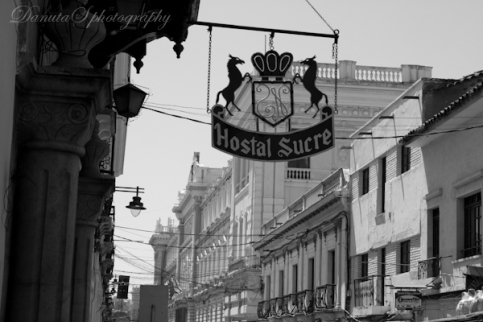



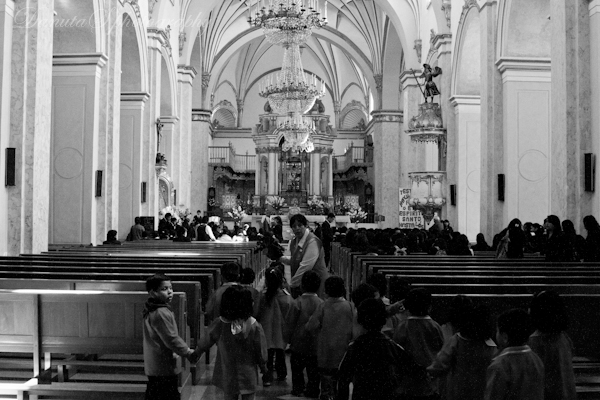


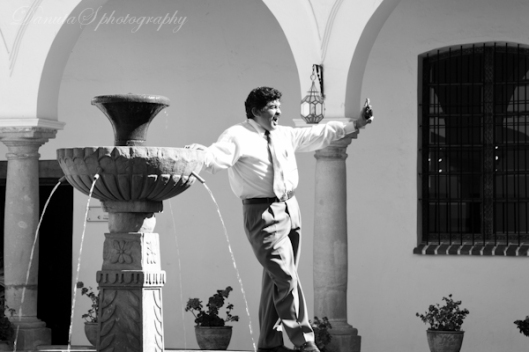





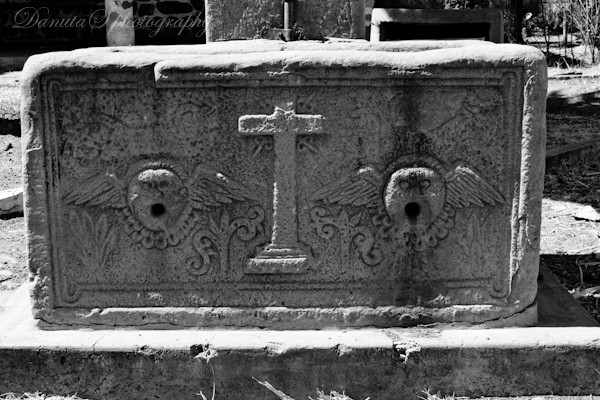


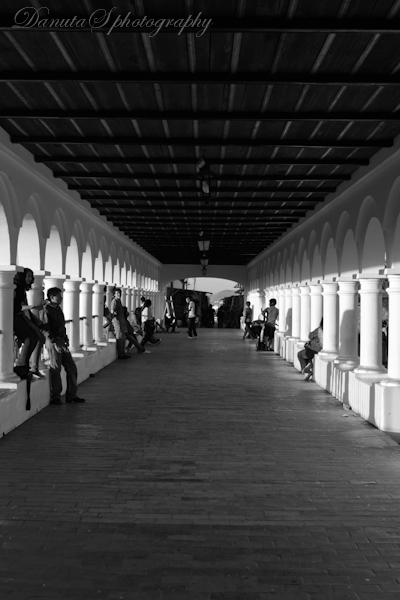

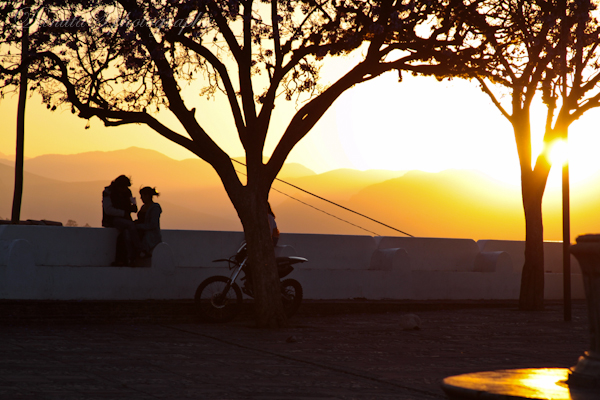


Reblogged this on 3rdculturechildren and commented:
Please scroll down for the English version. thank you so much for letting me share your so-educational post! :o
LikeLike
Thank you for liking and sharing it:)
LikeLike